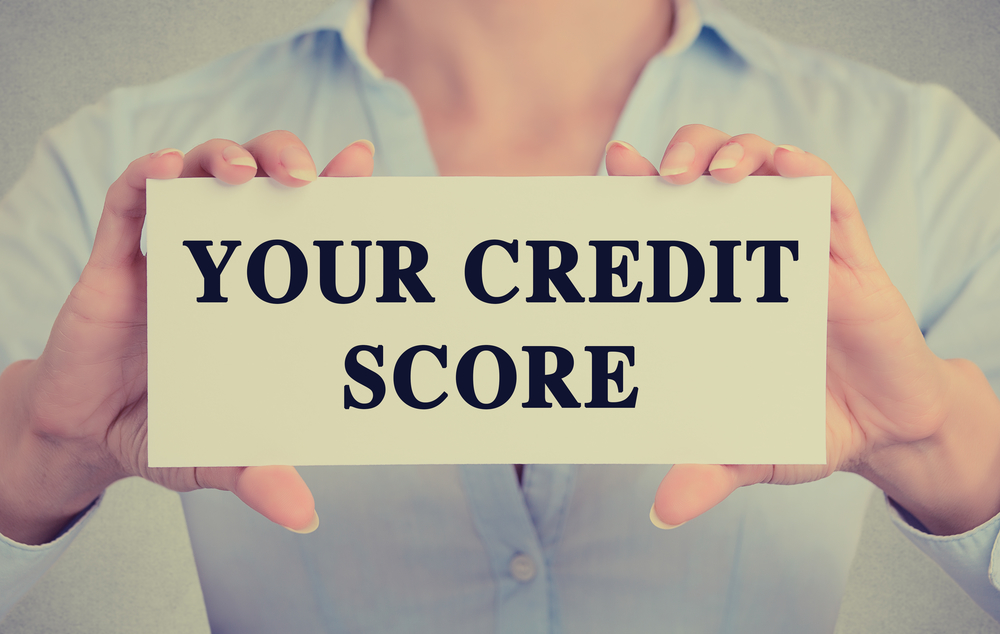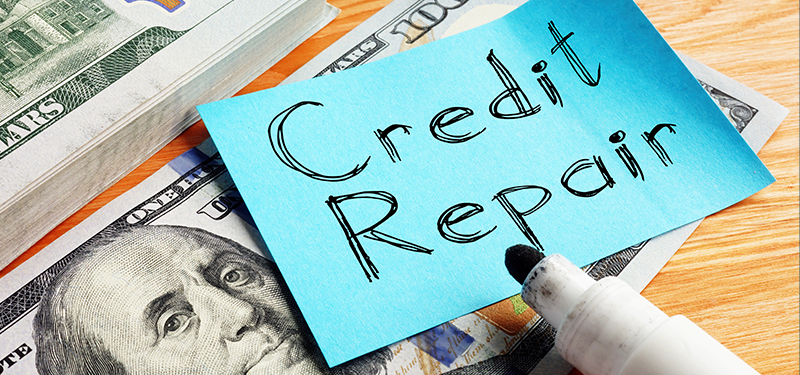Your Credit Score

One way to encounter your credit score and its importance is to simply channel surf on TV– for the commercials! And for many of those that you’ll run across – furniture stores running a holiday sale, auto dealers running year-end deals to “clear room” for the new models – what’s driving their pitch is often the financing involved.
Those ads don’t explicitly state it, but getting that “0% Financing for 48 months” is all tied your credit score. And a credit score is simply a numeric value that represents your creditworthiness. The credit score gives lenders an idea of how likely you are to pay them back for the financing they’re potentially extending to you. Today your credit score is the single most important factor lenders look at when you apply for a home or auto loan, sign-up for a new phone plan, or apply for a new credit card.
Your credit score represents your financial history as a borrower. It’s a way of quantifying to lenders how likely you are to pay them back. FICO is the most commonly used credit score by lenders today. It’s a 3-digit numeric value that is based on information obtained from the three major credit bureaus – Experian, Equifax and TransUnion. The higher your score is on that scale the better. Lenders use the score to determine whether or not to provide credit, the amount of credit to provide, and what the interest rates should be.
How is a credit score calculated?
The FICO methodology incorporates many different credit data elements that fall roughly into 5 general categories.
1. Your payment history
This accounts for 35% of your FICO score and looks at whether you’ve paid your bills on time. It’s the most important factor used for determining your credit score. And it makes sense why it would be – every lender wants to know your history in paying back other creditors.
2. The amount you owe
The amount you owe on your credit accounts is 30% of your credit score. It’s not just a total dollar amount owed, but instead looks at something called your credit utilization ratio. That ratio looks at how much you owe vs how much available credit you have for each particular account. The ratio, or percentage, you want to have under 30% per credit account.
3. Length of credit history
Generally the longer your credit history the better it is for your FICO score, and it accounts for 15% of your total credit score. This looks at your oldest account, newest account, and the overall average age of your credit accounts.
4. Your current credit mix
This isn’t a big factor in determining your credit score, only about 10%. It shows how well you’ve used different types of credit – have you used revolving credit, or installment accounts equally well?
5. New credit accounts opened
Like your credit mix, the number of new accounts opened accounts for 10% of your score. A consumer who opens a few new accounts in a relatively short period of time is considered to be a greater risk by lenders. This is especially true for those without a long credit history.
Credit score range
What is a good credit score, and where does your credit score stand now? FICO uses two different credit score scales. Their general scale, something called FICO Score 8, uses a range from 300-850. While their second score, which is specific to auto and credit cards, uses a range of 250-900. Below we’ll use the Score 8, but the other scale is roughly the same.
800 +
If you have a credit score of 800 or better, you have what is considered to be an Exceptional score. With this credit score you should have no trouble getting credit, and usually at the best rates available.
740 to 799
In this range your score is considered to be Very Good. People in this range are above the national average, and will generally receive better finance rates.
670 to 739
If you fall into this range your credit score is considered Good. It is the median range, and borrowers with a credit score here should generally expect to have a little higher interest rate than the two levels above.
580 to 669
In this range you have a Fair credit score. It’ll be tougher to get credit in this range, and if you do get it you’ll likely have a higher interest rate.
579 and lower
579 and below is considered a Poor credit score. Consumers with a credit score in this range may be rejected when applying for credit, or find to get credit they need to pay a deposit or fee.
How to improve your credit score
The first step is to obtain your credit score and find out where you’re at. You can go directly to FICO and order it. Unfortunately, they use a subscription-based approach to pricing that can add up over time. A less costly approach might be to use a service like Credit Karma. Though the cost is free, they do leverage your credit data to sell you things, which may not be what you’re looking for. Finally, and maybe the best option, is to use your current bank. Most national banks now provide your FICO score for free through their online sites.
Once you’ve obtained your credit score and it’s below the level you would like it to be at, you should pull your credit reports from the three major credit bureaus – Equifax, Experian, and TransUnion. Again, the credit reports are what feeds and determines your credit score. This can actually be done free of charge from the site Annual Credit Report.com. Through “The Fair Reporting Act” each of the three agencies have to make available your credit report for free once every 12-months.
Each of the reports is pretty straightforward in showing both positive and negative items that could affect your credit score. The negative items will generally fall into two categories: items that are accurate and will take some time to work them off your reports, and those items that are not accurate and should be removed.
Removing accurate negative items
These items are usually due to a history of poor credit usage and can take some time to come off of your reports. With good credit practices most of these items will be removed after 7 years, but you will likely see improvement in your credit score and the willingness of lenders to extend credit after 2 years. The following good practices will help improve these items over time:
• Be sure to pay all of your bills on time
• It may help to use automatic bill payment, when it’s an option, to avoid late payments
• Keep balances on your credit cards below 30%
• Pay down debt instead of moving it around
• Avoid applying for new forms of credit
Removing inaccurate negative items
These are errors on your credit report that shouldn’t be there, and which are negatively impacting your credit score. These can be removed and will have a more immediate positive impact on your credit score.
There are two main ways to handle these negative items on your credit reports: you can either do it yourself, or you can have professionals, like The Credit People, to do it for you.
The choice on whether to do it yourself or to use a professional to remove negative items from your credit report comes down to time and expertise. It will take some time and effort if you’re to attempt this on your own. You’ll have to do some research on what items can be removed, develop your rational for their removal, and then knowing how to effectively communicate your dispute to the three different bureaus. And often this is an iterative process, where you’ll have to know how to respond back to their initial denial. This approach can be effective if you have enough time and are willing to educate yourself on this process.
But often when you find out about errors on your credit report you don’t have the time – you’re applying for a mortgage or looking to buy a new car, or other demands in your life don’t allow you to go through the necessary learning curve to do this effectively. In that case it does help to use a professional.
A professional credit repair company like The Credit People can expedite the process of credit repair, and know how to effectively work with the bureaus to remove those items quickly. They also provide you with a personalized dashboard that allows you to track how things are progressing with your case. Which means you don’t have to keep files and paperwork for all the interaction necessary to work through repairing your credit.
Your choice in performing credit repair is like any other choice when deciding to do a project yourself. What are the tradeoffs for doing it myself or not? And what, if any, opportunity cost might there be. If you can do it yourself that’s great, and there are a number of good sources out there to get you started. But if that’s not the case, then using a professional credit repair agency makes sense to help you work through things as quickly and effectively as possible.






